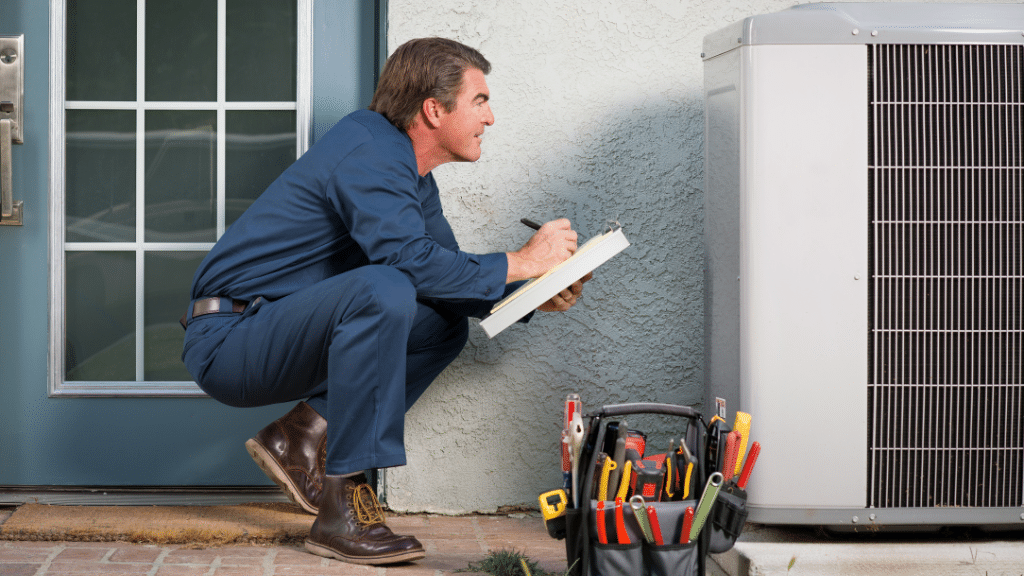Shopping for a new HVAC system can feel overwhelming. Between dozens of models, brands, and technical details, it’s easy to get lost in the jargon. But there’s one factor you should always keep front and center: HVAC energy-efficiency ratings.
These ratings are more than numbers—they’re your roadmap to lower bills, greater comfort, and a reduced environmental footprint. Whether you’re replacing an aging system or planning a new build, understanding efficiency ratings helps you choose the best investment for your home.
What Are HVAC Energy-Efficiency Ratings?
Think of HVAC energy-efficiency ratings as miles per gallon for your heating and cooling system. They measure how effectively a system converts fuel or electricity into comfort.
Why does this matter?
Higher ratings mean your system uses less energy to keep you warm in winter and cool in summer. Over time, this translates into significant savings and less strain on the environment.
These ratings are regulated by industry standards and government agencies, so you can confidently compare options across manufacturers. Every HVAC system sold in the U.S. is required to display them—giving you clarity at the point of purchase.
Key Efficiency Ratings for Air Conditioners
SEER (Seasonal Energy Efficiency Ratio)
SEER measures cooling efficiency over an entire season. It’s calculated by dividing the system’s cooling output by its energy consumption during the same period.
Current minimum standards:
-
Northern states: 13 SEER
-
Southern states: 14 SEER
Tip: High-efficiency models with SEER ratings of 20+ can cut your cooling costs by up to 50%.
Learn more about SEER ratings from ENERGY STAR
EER (Energy Efficiency Ratio)
EER measures performance at a specific temperature (typically 95°F). Unlike SEER, it shows how efficiently your system works during peak heat.
If you live in a hot climate, a high EER rating is especially important for keeping costs down when demand is highest.
Heat Pump Efficiency Ratings
HSPF (Heating Seasonal Performance Factor)
HSPF measures heating efficiency across an entire season.
Current minimum standard: 8.2 HSPF
High-efficiency systems: 10+ HSPF
Heat pumps are a popular choice because they provide both heating and cooling in one system, often delivering excellent year-round efficiency.
COP (Coefficient of Performance)
COP measures how effectively a heat pump converts electricity into heat at a given outdoor temperature.
-
A COP of 3.0 means it produces three units of heat for every unit of energy consumed.
-
COP varies by temperature, so check ratings for your specific climate.
Furnace Efficiency Ratings: AFUE
AFUE (Annual Fuel Utilization Efficiency)
AFUE indicates how much fuel your furnace converts into heat over a season.
Current minimum standards:
-
Gas furnaces: 80% AFUE (78% in some southern states)
-
Oil furnaces: 83% AFUE
High-efficiency condensing furnaces can achieve 90–98% AFUE, capturing extra heat from exhaust gases that would otherwise be lost.
How Efficiency Ratings Affect Your Energy Bills
The impact is simple: higher efficiency means lower costs.
Example:
If your old 10 SEER system costs you $1,200/year to run, upgrading to a 16 SEER system can save you around 37.5%—or $450/year.
Other factors to consider:
-
Local utility rates
-
Your home’s insulation and ductwork
-
Usage patterns and climate
Beyond Ratings: Other Efficiency Features to Look For
Today’s HVAC systems include advanced technologies that enhance performance:
Variable-Speed Compressors: Adjust output for precise comfort and energy savings.
Smart Thermostats: Learn your habits to optimize efficiency automatically.
Zoning Systems: Heat or cool only the rooms you’re using.
Proper Installation: Even the best system won’t perform well if it’s installed incorrectly—this is where expert guidance matters most.
Making the Right Choice for Your Home
When comparing options, think beyond the sticker price.
Calculate Payback: Divide the extra cost of a high-efficiency system by annual savings to see how long it takes to recoup your investment.
Consider Your Timeline: If you plan to stay in your home for many years, investing in higher efficiency makes sense.
Look for Rebates: Many utility companies and government programs offer incentives for high-efficiency upgrades.
Factor in Comfort: Efficient systems often mean more consistent temperatures and quieter operation.
Professional Guidance Makes All the Difference
While understanding HVAC energy-efficiency ratings is crucial, working with an experienced HVAC professional ensures you get the right system for your space.
A qualified contractor will:
-
Perform a load calculation to size your system correctly
-
Recommend the most appropriate efficiency level for your needs
-
Ensure professional installation for maximum performance
Start Your Journey to Smarter Comfort
The more you understand about HVAC energy-efficiency ratings, the better equipped you’ll be to make an informed decision that saves money and boosts comfort.
If you’re ready to explore your options, the team at Allgeier Air is here to help. We’ve been assisting Louisville-area homeowners create efficient, comfortable homes for decades.
Contact us today or call (502) 244-9999 to schedule a consultation.




